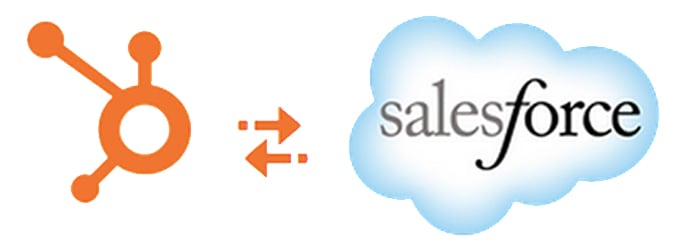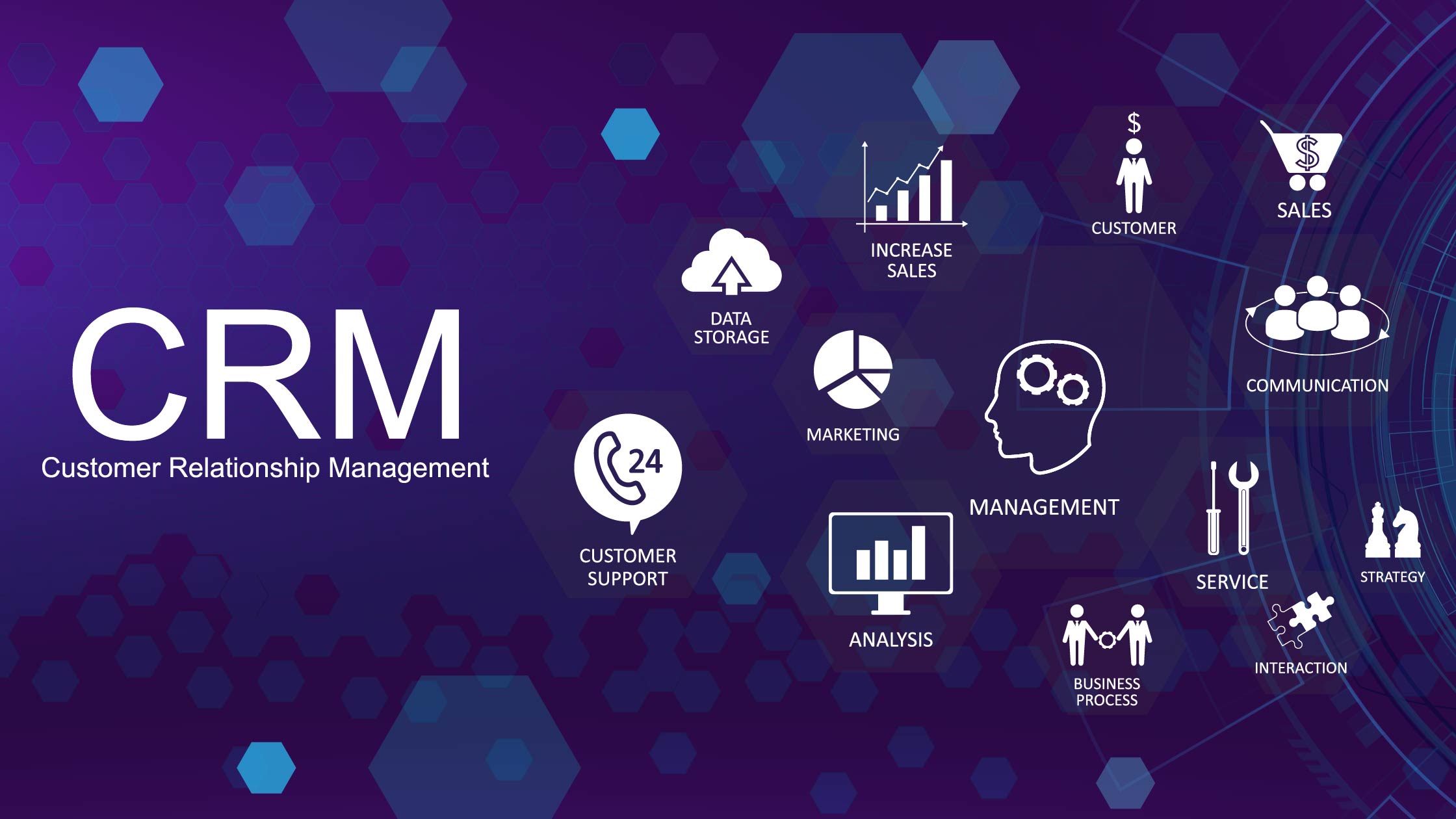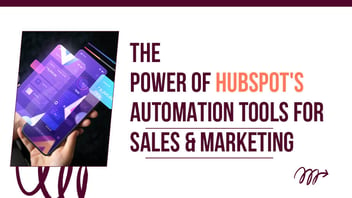
Super Easy HubSpot Integration Guide for B2B Businesses
.png?width=1282&height=584&name=unnamed%20(53).png)
"The customer is the king." - Bill Gates
Are you tired of scattered customer data and disconnected systems? HubSpot integration is here to revolutionize your customer relationship management.
It is game-changing software for businesses struggling to keep track of their customer interactions and sales leads.
Hubspot Integration integrates with a plethora of tools to streamline and automate a company's management.
By integrating HubSpot with your existing systems, you can bid farewell to manual data entry and hello to a unified view of your customer interactions. In addition, the software's intuitive interface and robust features make it a cinch to organize a company's information in one centralized location.
To explore the full extent of how HubSpot CRM can transform your data management, delve into this enlightening article. It will unveil the software's many features and potential benefits.
You have made it to the end of this journey of discovering HubSpot automation sequences. With this tool, you can easily create automated email campaigns and task reminders to nurture contacts over time.
Workflows can also be used to automatically enroll contacts in a series of actions. With these tools, your team can work smarter, not harder, and increase your productivity!
So, take the first step towards automation and reaping the benefits today! Happy automating.
What Is Hubspot CRM Integration?

It's a tedious task to understand this. But believe us; you won't find any simpler explanation of HubSpot CRM integration guide than this.
Without further ado, let's get started!
HubSpot CRM Integration is a service offered by the popular customer relationship management platform, which allows companies to integrate their existing sales and marketing software with HubSpot. With this integration, businesses can easily synchronize data between platforms for improved accuracy and efficiency in their operations.
For example, suppose your business already has a Salesforce or Zendesk system set up. In that case, you can use HubSpot's API integration capabilities to automatically sync information, such as lead generation tools and reports, across all connected systems. This way, you get timely updates from various sources at once without manually inputting each one into other programs individually - saving time and energy in the process!
Here's another example of a business with a product page on Google.
Suppose someone visits your website’s product page but doesn’t make a purchase right away. In that case, HubSpot CRM integration will automatically reach out with special offers—an easy way to convert warm leads into paying customers.
You can also clean up your databases and integrate your website and business Emails with HubSpot.
Why Is Hubspot Integration Important?
Now let's dive deeper into why integration is important when harnessing HubSpot's full potential:
1. Improved Data Tracking
Integrating HubSpot with other major applications, such as Google Ads and Salesforce, allows companies an unparalleled ability to monitor their customers' behavior over time. This tool can do everything from each interaction on their website to various touch points throughout the sales process until purchase completion.
This type of tracking helps marketers hone successful strategies better than ever before by allowing them to act in real-time and seamlessly.
2. Enhanced Automation And Productivity
Integration between multiple software packages also speeds up internal processes significantly. It also reduces manual labor while freeing teams to focus on more critical tasks, like strategic analysis, content creation, etc.
Ultimately, CRM integration helps businesses save costs and access higher ROI portals much quicker. For example, connecting web forms directly with one another boosts efficiency in capturing lead information.
Additionally, social channels connected via API translation enrich conversations under certain campaigns that could have been missed if two different tools were used separately.
3. Better Customer Experience
We know how valuable customer experience (CX) truly is within retention rates. So having key syncing behind the scenes alleviates any additional hassles from the seller side.
CRM integrations address many issues with conventional CRM usage. However, ensuring that CRM interfaces function as planned requires time and preparation.
Additionally, it makes sense to spend money on a CRM solution that is both reasonable and all-inclusive because a unified CRM platform may give you a variety of tools to handle every part of your firm. You don't need to add a dozen of software integrations to get started.
Three Different Options You Have To integrate Hubspot With Any External System
Are you looking to integrate the powerful features of HubSpot into an external system? If so, you’re in luck! There are several easy ways to make your two systems work together with minimal fuss. Here we explain three different options that might suit any type of integration project:
1. API Calls
If your external system is compatible, making API calls to HubSpot should be straightforward. A message delivered to a server to provide an API with a service or information is known as an API call or API request. But with CRM API, even accessing these objects, records, and actions is possible.
2. Zapier Integration
Using a tool like Zapier makes it fast and simple to put multiple applications into sync by setting up automated trades between them, i.e. allowing the movement of customer data from one platform to another. You simply need to select suitable triggers and various operations. The whole procedure also does not require vast amounts of expertise, making sure anyone, regardless of coding proficiency level, has access to such valuable feature sets.
3. WordPress Plugins
For those who have a website built on WordPress, there's an array of plugins available to build almost any type of website. From e-commerce websites to portfolios to directory sites, you can extend or add additional capabilities to your site by using plugins.
Native Or Ready-Built Integrations

Native or ready-built integrations are a popular way for businesses to streamline their operations. One example of a widely used ready-built integration is the integration between HubSpot and Salesforce.
According to HubSpot, this integration is used by thousands of customers and allows for seamless data syncing between the two platforms. It means that customer data and other information can be transferred between the two systems, saving businesses an average of 4 hours per week on manual data entry.
Not only does this integration save time, but it also improves data accuracy and makes better customer insights. For example, by having all customer data in one place, businesses can see a complete picture of their customer interactions and make more informed decisions.
In addition to the time-saving benefits, the integration also automates certain processes, such as lead routing and nurturing. It can send lead intelligence to your teams and give higher conversion rates.
Hubspot Operations Hub - Data Sync
The HubSpot Operations Hub - Data Sync is a sophisticated integration that facilitates the synchronization of data between HubSpot and other third-party tools. This integration is handy for businesses that rely on multiple platforms to manage different aspects of their operations.
One notable example of the utility of this integration is its ability to synchronize customer data between HubSpot and Salesforce. By integrating these two systems, businesses can ensure that their sales and marketing teams have access to a comprehensive view of customer interactions.
Another example of the integration's utility is its capability to automate the creation of Zendesk tickets upon the receipt of customer inquiries through HubSpot's contact forms. This feature can significantly enhance the efficiency of customer support operations by ensuring that inquiries are promptly addressed and facilitating the tracking of customer interactions.
The HubSpot Operations Hub - Data Sync also allows for customizing data, syncing parameters, and creating data sync workflows. This level of granularity in configuration enables businesses to tailor the integration to their specific needs, thereby maximizing its efficiency and effectiveness.
But what data can you sync with this?
Well, you can use your Google or Outlook contacts, Stripe and HubSpot customers, Pipedrive with HubSpot data, etc.
You can also sync iCloud, Microsoft Dynamics 365, and Outreach.
How To Find The Best Integration For Your Business?
It can be a bit overwhelming to try and figure out which one is the best fit for your specific needs, but don't worry - we are here to help!
First of all, it's important to understand what you want to achieve with your CRM integration. Are you looking to improve your sales pipeline, streamline your customer service, or gain insights into customer behavior? Once you have a clear idea of your goals, you can start looking for a CRM with features that will help you achieve them.
Another important factor to consider is how easy the CRM is to integrate with your existing systems. Some CRMs offer pre-built integrations with popular tools like Salesforce, Gmail, and Slack, while others may require more customization. Make sure to check if the CRM you're interested in has an API (application programming interface) that allows for easy integration.
It's also a good idea to check reviews and customer testimonials to see what other businesses have experienced when using CRM. You can find them on the CRM website, business software review websites, or through word of mouth.
According to Gartner, the top CRM providers in the market are Salesforce, Microsoft, SAP, Oracle, and Adobe. Use these if you cannot work well with HubSpot CRM. These companies have a wide range of products that can fit any business's needs.
Lastly, make sure to schedule a demo or free trial with the CRM provider before making a decision. It will give you a chance to test drive the software and see how it feels to use it on a day-to-day basis.
Ways To Integrate With HubSpot API
Here are a few ways you can use the API to integrate with HubSpot:
1. Syncing your CRM data
You can use the API to create, read, update, and delete data in your HubSpot CRM. This can be especially useful for keeping your CRM up-to-date with customer data from other systems.
2. Automating email campaigns
The API can be used to create, send, and manage your email campaigns within HubSpot. Automating repetitive tasks and triggering email campaigns based on actions or events can save you a lot of time.
3. Tracking website activity
The API can be used to track website activity, such as page views, form submissions, and contact information. This data can then be used to create targeted marketing campaigns and personalized experiences for your website visitors.
4. Building custom apps
You can use the API to build custom apps that integrate with HubSpot. This includes lead capture forms, appointment schedulers, and e-commerce integrations.
Step-by-step Guide On How To Use HubSpot's API
According to an Oracle, marketing automation companies give $5.44 returns. Here are the basic steps to use HubSpot's API and get the same return for your company:
1. Create a HubSpot Developer Account
.png?width=1228&height=563&name=unnamed%20(56).png)
In order to use the HubSpot API, you'll need to create a HubSpot developer account. This will give you access to your API key, which is required for all API requests.
2. Get Familiar with the API documentation
HubSpot provides detailed documentation for its API, including information on available endpoints, request and response formats, and authentication requirements. It is important to read through the documentation and understand the different capabilities of the API.
3. Test the API using a tool like Postman
.png?width=1230&height=418&name=unnamed%20(57).png)
Before you start building your integration, testing the API using a tool like Postman is a good idea. It will allow you to see how the API responds to different requests and ensure that you're able to make successful calls.
4. Start coding your integration
.png?width=1295&height=591&name=unnamed%20(58).png)
Once you're familiar with the API and have tested it using Postman, you can start building your integration. You can use any programming language that can make HTTP requests, such as Python, JavaScript, or PHP.
5. Authenticate your requests
.png?width=1278&height=630&name=unnamed%20(59).png)
The HubSpot API requires authentication for all requests. Therefore, you'll need to include your API key in the headers of each request. Some endpoints also require additional authentication, such as OAuth.
6. Implement error handling
.png?width=974&height=417&name=unnamed%20(60).png)
It's important to implement error handling in your code to handle any errors that may occur during the API calls. It includes handling HTTP status codes, such as 404 or 500, and any errors returned in the API response.
7. Deploy your integration
Once you've finished building your integration, you can deploy it to your production environment.
Keep in mind that integrating with an API requires some level of technical knowledge and experience in coding. If you have any doubts or need further help, consider hiring a developer or a HubSpot professional service provider.
Conclusion
Integration is the key to success in today's fast-paced business world, and that's especially true when it comes to your CRM. With HubSpot integration, you'll be able to automate your workflow. At the same time, you can easily sync customer data, automate email campaigns, track website activity, and build custom apps with the API.
So, say goodbye to disjointed and disconnected data and embrace the power of an integrated 360-degree marketing and sales solution with HubSpot.
Give your business a competitive edge by integrating your CRM with HubSpot today!




